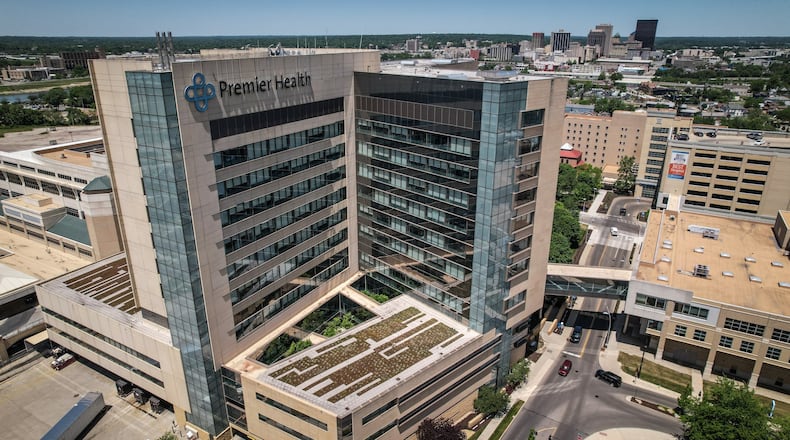“Community benefit is an obligation that non-profit hospitals provide to the community in exchange for that tax exempt status from the federal government,” said Sarah Hackenbracht, president and CEO of GDAHA.
The figures provided by GDAHA include 28 of the 29 GDAHA member hospitals and health organizations, serving people of 11 Ohio counties including Auglaize, Butler, Darke, Champaign, Clark, Greene, Miami, Montgomery, Preble, Shelby, and Warren.
“Every year, hospitals gather data that’s on the services that fall under that community benefit umbrella,” Hackenbracht said. GDAHA gathers that data from a regional perspective to show the overall investment that hospitals are making in their communities, Hackenbracht said.
| Regional Community Benefit | Regional Total | Regional Total |
|---|---|---|
| FY2020 | FY2021 | |
| Charity Care | $45,513,242.49 | $45,199,792.35 |
| Medicaid Shortfall | $496,458,740.00 | $595,742,226.00 |
| Health Profession Education | $48,805,401.00 | $45,114,276.00 |
| Community Health Improvement Activities | $47,580,200.00 | $31,643,494.00 |
| Cash/In-Kind Contributions | $27,147,846.00 | $8,610,863.00 |
| Other | $733,060.00 | $876,818.00 |
| Total | $666,238,489.49 | $727,187,469.35 |
National view
The estimated value of the tax exempt status for non-profit hospitals across the U.S. was $28 billion in 2020, according to a Kaiser Family Foundation report, which estimates non-profit hospitals are saving $14.4 billion on federal taxes and $13.7 billion on state and local taxes with their tax exempt status. This was over two-fifths, or 44%, of net income earned by non-profit facilities in that year, the Kaiser Family Foundation said.
For comparison, the Kaiser Family Foundation also found the total value of Medicare and Medicaid “disproportionate share” hospital payments in the same year to be $31.9 billion in fiscal year 2020. Those are payments made to hospitals serving a significantly disproportionate number of low-income patients to offset costs of charity care and uncompensated care, the Kaiser Family Foundation said.
Supplemental payments
The majority of the community benefit provision is taken up by Medicaid shortfall. For fiscal year 2020, the Medicaid shortfall for the region was estimated at $496 million, according to GDAHA. For 2021, that amount was estimated at $595 million.
Due to shortfall and other forms of uncompensated care, hospitals receive additional supplemental payments in the form of disproportionate share hospital payments (DSH) and other supplemental payments. Those payments were not factored into the Medicaid shortfall amounts.
“The community benefit provision isn’t tied into how much money are you spending in the community, the overwhelming majority is tied to what’s known as Medicaid shortfall, which is the idea of the difference between how much Medicaid pays and how much you get in commercial rates,” said Loren Anthes, head of policy and programs at Yuvo Health, a health tech company working with federally qualified health centers. “It incentivizes increasing the rates in private insurance. Because if you increase the price, you increase the gap and increase the tax benefit.”
Hospital associations like GDAHA say the revenue from private insurance is needed to cover their patients, but also patients using government subsidized coverage.
“Hospitals, in today’s day and age more so now than ever, are very transparent with their communities that because we have a large number of individuals in our community covered by Medicaid, we have to work with the private insurers across Ohio to ensure that what those private insurers pay for in terms of services helps us cover the gap of the cost of services in order to continue to provide care for the entire community because that’s the responsibility of the short-term acute care hospitals,” Hackenbracht said.
Medicaid reimbursements also haven’t gone up in 10 years, she said. Those include a base Medicaid rate and an additional layer for the disproportionate share hospital payments.
“Most of the time, that still does not cover the total 100% cost of care, and that’s particularly true for hospitals that serve as a safety net hospital,” Hackenbracht said. “Your DSH payments can’t exceed a hospital’s uncompensated care cost, so that DSH payment is not something that the hospital is going to be able to use to generate additional dollars above and beyond the services that they’re providing.”
Acute care hospitals have to be open 24/7 and ready to provide trauma care services, as well as offer a variety of specialty services in an on-call model, Hackenbracht said.
There is an ongoing shift in health care toward community-based care and value-based care, or the idea of paying for outcomes, which also includes a focus on preventative care.
“Most of how we pay for health care has very little to do with value,” Anthes said.
There is also additional focus being paid to the social determinants of health, which include other factors that influence health outcomes.
“The United States, when it comes to medicine, spends more...on health care than your average industrialized country. But when you look at how much we spend on social needs, we actually fall behind,” Anthes said. “So part of the solution here also has to be how do we address issues like housing and transit education, income, so on so forth.”
About the Author

